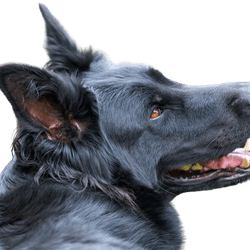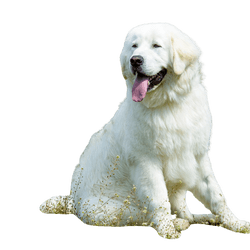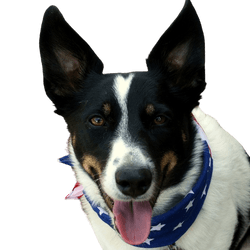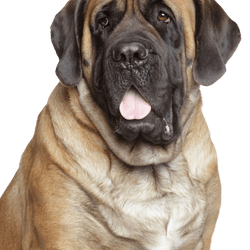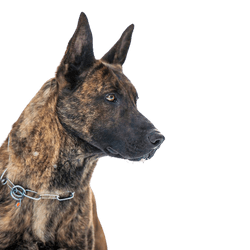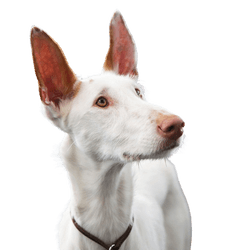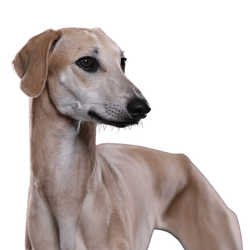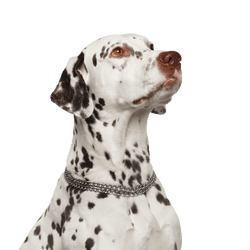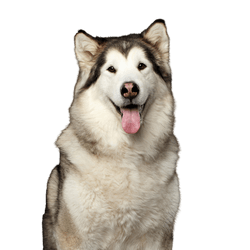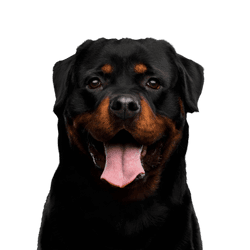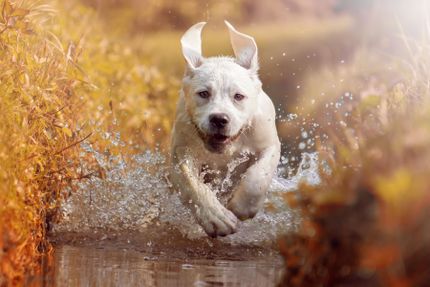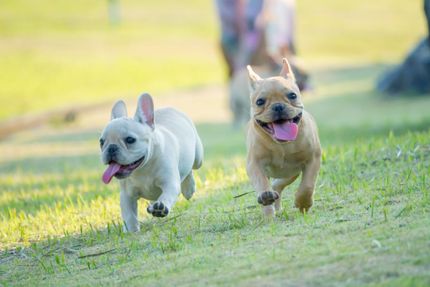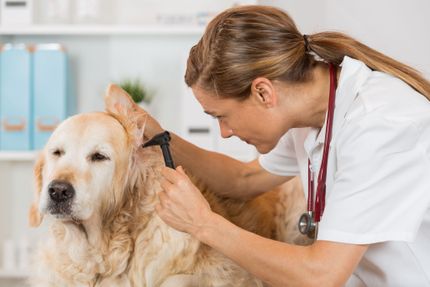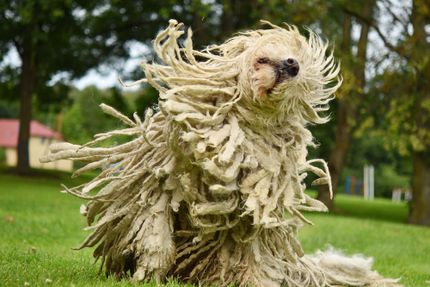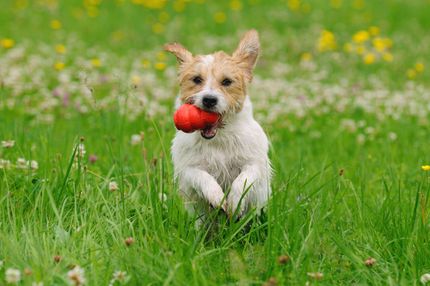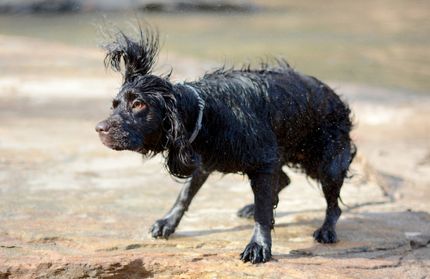
Boxer Breed description: Character & Co
Boxer
Facts & Origin
What is the origin of the Boxer?
Boxers have inherited their strong physique from their ancestors, the Brabant Bullenbeisser. Already back in the Middle Ages they were widespread throughout Europe. Due to their courage and strength they were popular hunting companions. At that time, the nobility went hunting for bears and bisons. They were also used in show fights against powerful bulls, which earned them their name Bullenbeisser (engl. bull biters). They benefited from their wide mouth, which gave them a firm grip. In the 19th century, the boxer was given another task, that of a "butcher's dog": in slaughterhouses they were used to herd large cattle together. Although Boxer-like animals have been around for centuries, they were first shown at a dog show in Munich in 1895. At that time, only one applicant, "Mühlbauer's Flocki", was entered, who was later registered as number 1 of its pedigree. In the same year, the first Boxer club in Germany was founded, in 1905 the breed standard was defined.
What are the breed characteristics of the Boxer?
Because the Boxer adapts to its environment without any problem, it can be kept indoors. The prerequisite is that you provide your four-legged darling with sufficient exercise. Boxers need daily exercise and love to accompany their owners when cycling, jogging or hiking. As its hunting instinct is easily controllable, it can - where permitted - run without a leash. However, it is important to get the Boxer used to the leash from an early age. Because they can be a bit impetuous, they should have the basic commands down. When training a Boxer, you should know that the animals are only fully grown up at an age of three years. During their youth, you should not ask too much of them physically or mentally.

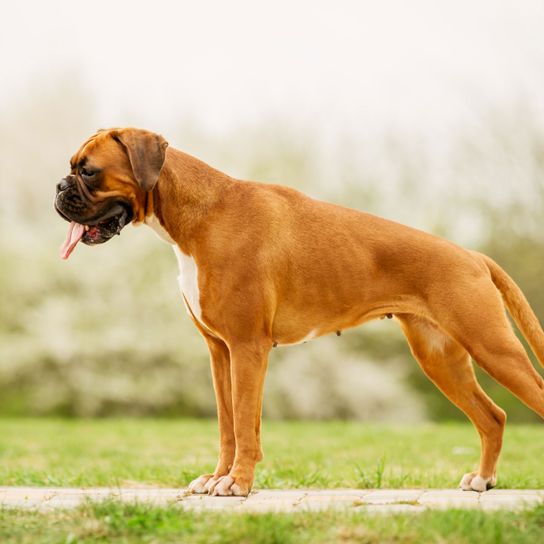
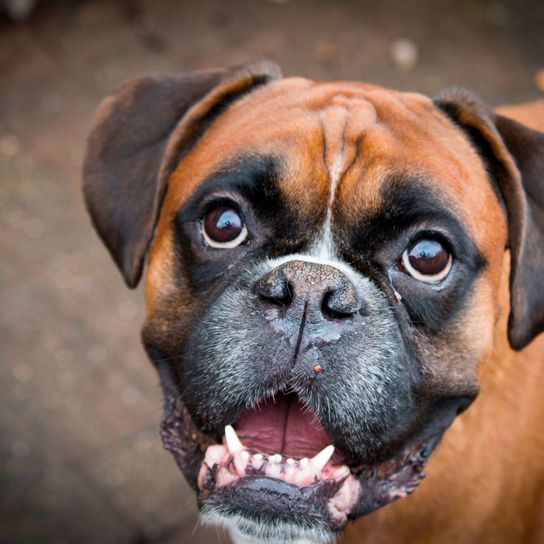
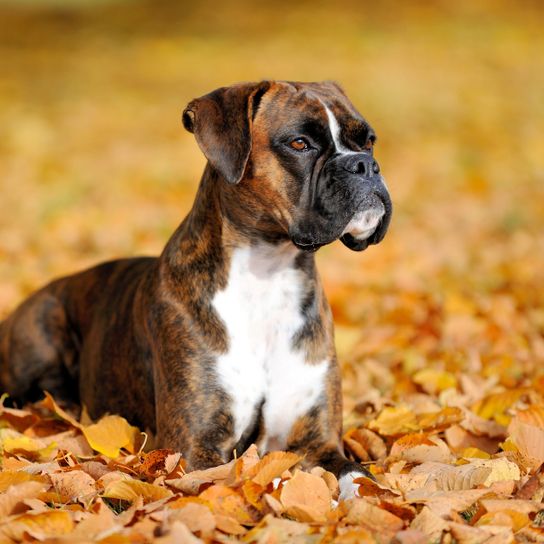
| Alternate Name | German Boxer |
| Origin | Germany |
| Life expectancy | 10 - 15 years |
| Care requirements | low-maintenance |
| Activity level | average to high |
| FCI group | Molossian type |
| AKC group | working group |
| KC group | working group |
Boxer mixes
Attitude, character and temperament of the breed
What are typical character traits of a Boxer?
Despite their original use as a fighting and hunting dog, today's Boxers present themselves as a good-natured and calm family member. Even small children cannot disturb their calm state. With their good-natured character, they are a persevering playmate. Your Boxer will always be loyal to you and affectionate towards its people. But as soon as someone approaches their home, they are on the alert. This four-legged friend is reserved and suspicious of strangers. As an ideal watchdog, they are also prepared to defend their family. Since the Boxer adapts to their owner and will quickly subordinate themselves, they are also suitable for people with little dog experience.
Character
Usage
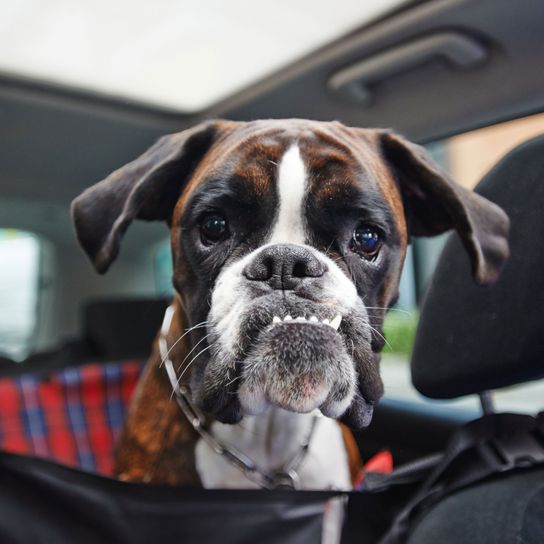
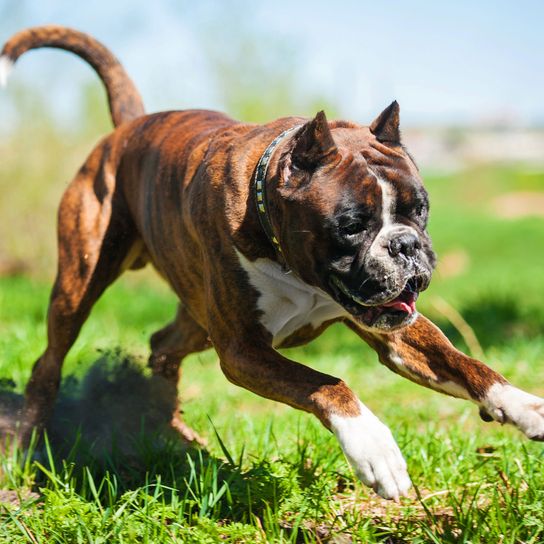
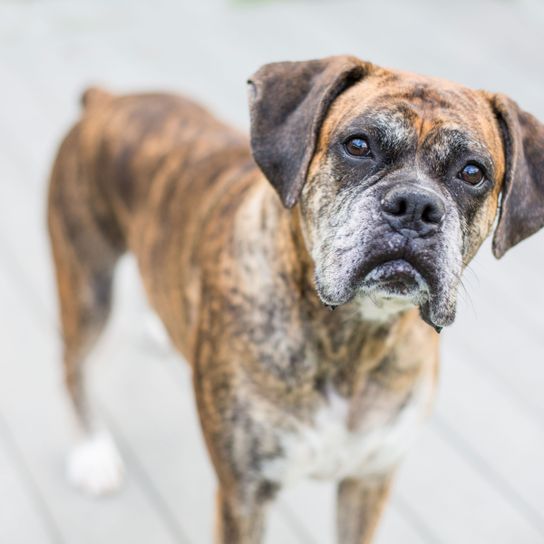
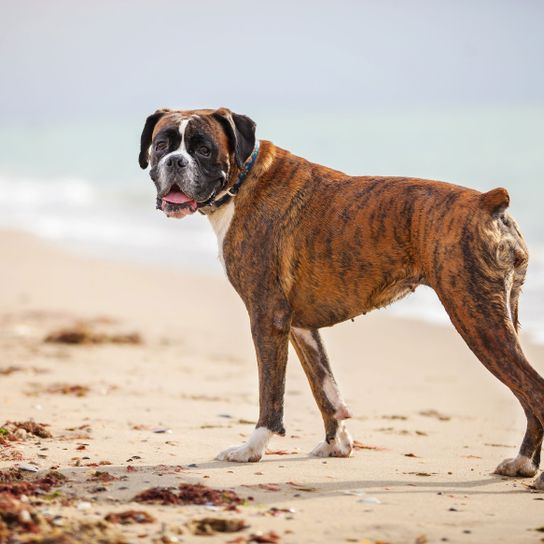

Health and breeding information
What are typical Boxer diseases?
When adopting a Boxer into your home, you should know the risks of hereditary diseases, these include:
- Hip joint dysplasia
- Arthritis
- Tumours and heart diseases
- Kidney Diseases
Many of the hereditary diseases result from the fact that in Boxer breeding the same ancestors were paired with each other. If you want to buy a Boxer, it is best to contact a trustworthy breeder.
What is to be considered with Boxer breeding?
Since inbreeding has a negative effect on the life expectancy of a Boxer, it is better to take a closer look at the breeding pedigree. The ancestors should never be repeated in the document. Well-known breeders only use parent animals that are of good fitness and have balanced temperament. So it pays off to invest time in researching your potentially new family member beforehand. If you get a puppy from a reputable breeder, you are guaranteed to have a long-lasting, bright future with your four-legged friend. A Boxer costs about 1000-1500 Euros.

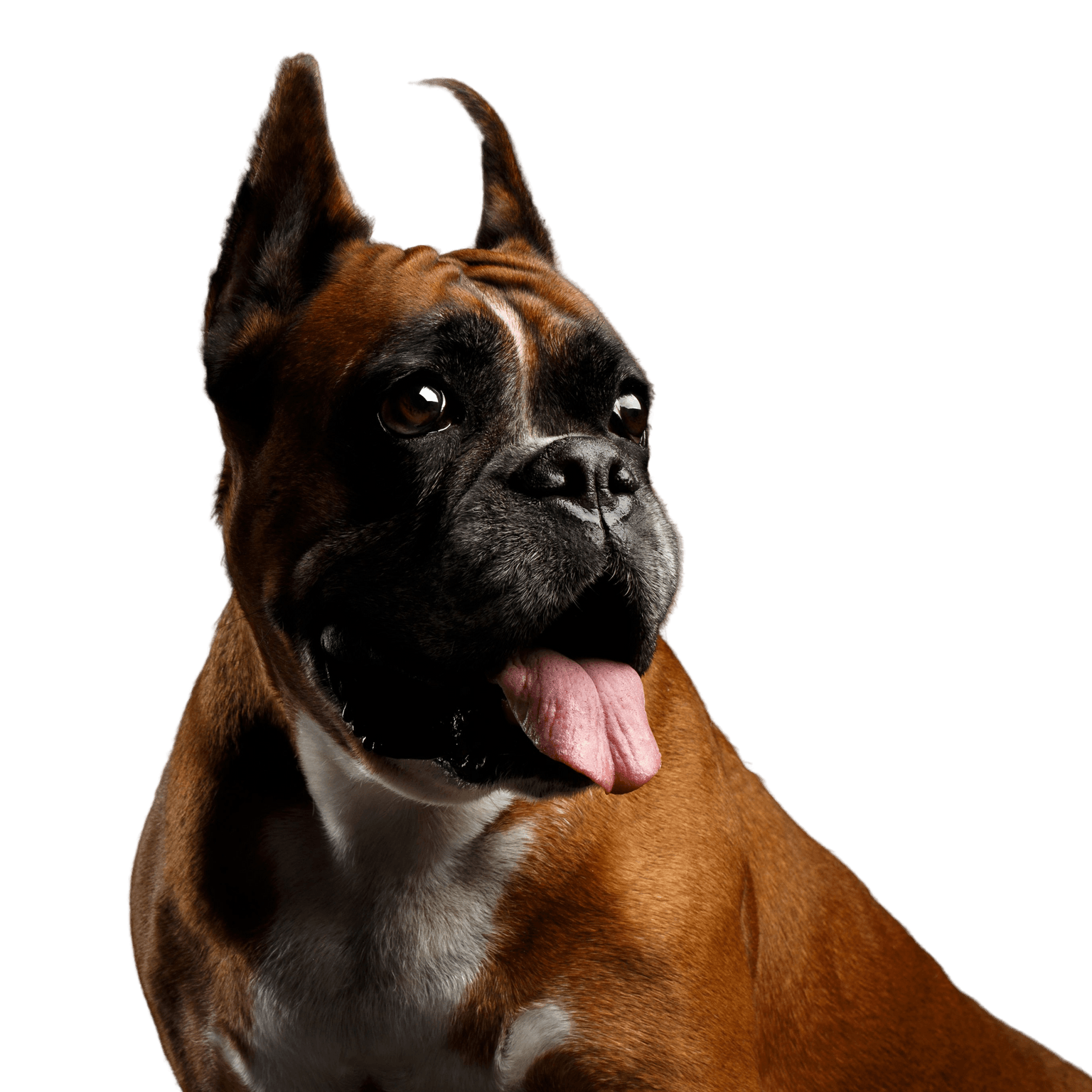
Appearance and coat of the Boxer
Very typical for the Boxer is their angular head with its broad muzzle. In addition, your Boxer has a distinct overbite, with their lower jaw being more prominent than their upper jaw. In former times, their tail and ears were docked, but this is forbidden in Germany since 1987 and in Austria since the 2000s. Also, the cropping of the ears is typical - but not very common anymore. There are different variations of coat colours. According to the breed standard of the international dog association FCI, yellow and brindled animals are allowed. The shades range from light yellow to a dark reddish-brown. Another characteristic is that only a maximum of one third of the coat may have white markings. The coat is smooth and lies close to their skin. Particularly when your Boxer is playing, their muscular build comes through. The overall body is square-shaped: the length of their body and the height at the withers are almost identical.
What is the average size of a Boxer?
Females can grow to a height of 53 to 60 centimetres, males reach a height of 57 to 63 centimetres.
How much does a boxer weigh?
Boxers weigh between 25 and 30 kilograms.
What is the average life span of a Boxer?
What age your Boxer can reach depends on which breeding it is from. Hereditarily handicapped animals only reach an average age of 9 years. With healthy ancestors they can reach a much higher age.
| Fur length | short |
| Fur | flat coated |
| Ear shape | Floppy Ear |
| Tail | lang |
| Anatomy | square, hefty |
| Size ♀ | 53 - 60 cm |
| Weight ♀ | 25 - 29 kg |
| Size ♂ | 57 - 65 cm |
| Weight ♂ | 27 - 32 kg |
| Suitable For | Beginner, Children |
Colors
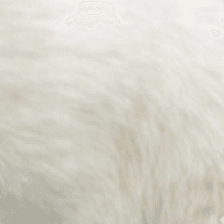

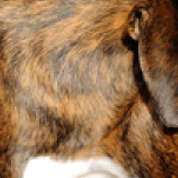


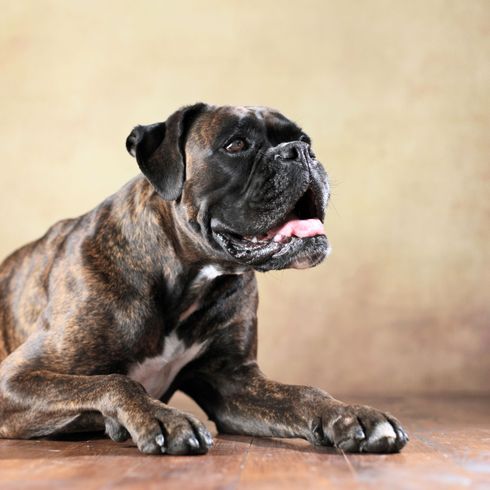
Known Diseases
Epilepsy
Definition: Dog has epilepsy if, for example, at least two epileptic seizures occur more than 24 hours apart.
Cardiomyopathy
In large breeds of dogs, dilated cardiomyopathy (DCM) is by far the most common cardiomyopathy.
Kidney disease
Symptoms of kidney disease in dogs: increased urination (polyuria) increased water intake. Inflammation of the mucous membrane of the mouth. Loss of appetite
Wobbler syndrome
In veterinary medicine, this is the name given to a complex of symptoms caused by nerve damage in the area of the spinal cord or spinal cord nerves in the area of the cervical spine.
FAQ
-
No, neither. The boxer dog is neither dangerous nor a list dog or fighting dog.
-
A Boxer needs average to much exercise and should not be walked less than 3 hours per day. He also enjoys running and dog sports and needs them for his physical health.
-
Molosser and Setter breeds tend to drool more than other breeds. In addition, it is exacerbated by the fact that particularly large dog breeds with large chaps drool more.
Other large dogs
Useful Articles
You can find articles that might interest you in the dogbible blog to match your favorite breed.
Visit our magazineto stay up to date on dog trends.
To find out more, view our Privacy Policy
Find here the breed that suits you and find out what character traits it has. Here you can also learn more about the origin, size and weight of your favorite breeds.
Matching your favorite breed, you'll find articles that might interest you on the dogbible dog blog.
3 reasons why your dog scratches all the time
Dogs in cars - what to watch out for, legal situation and important information






